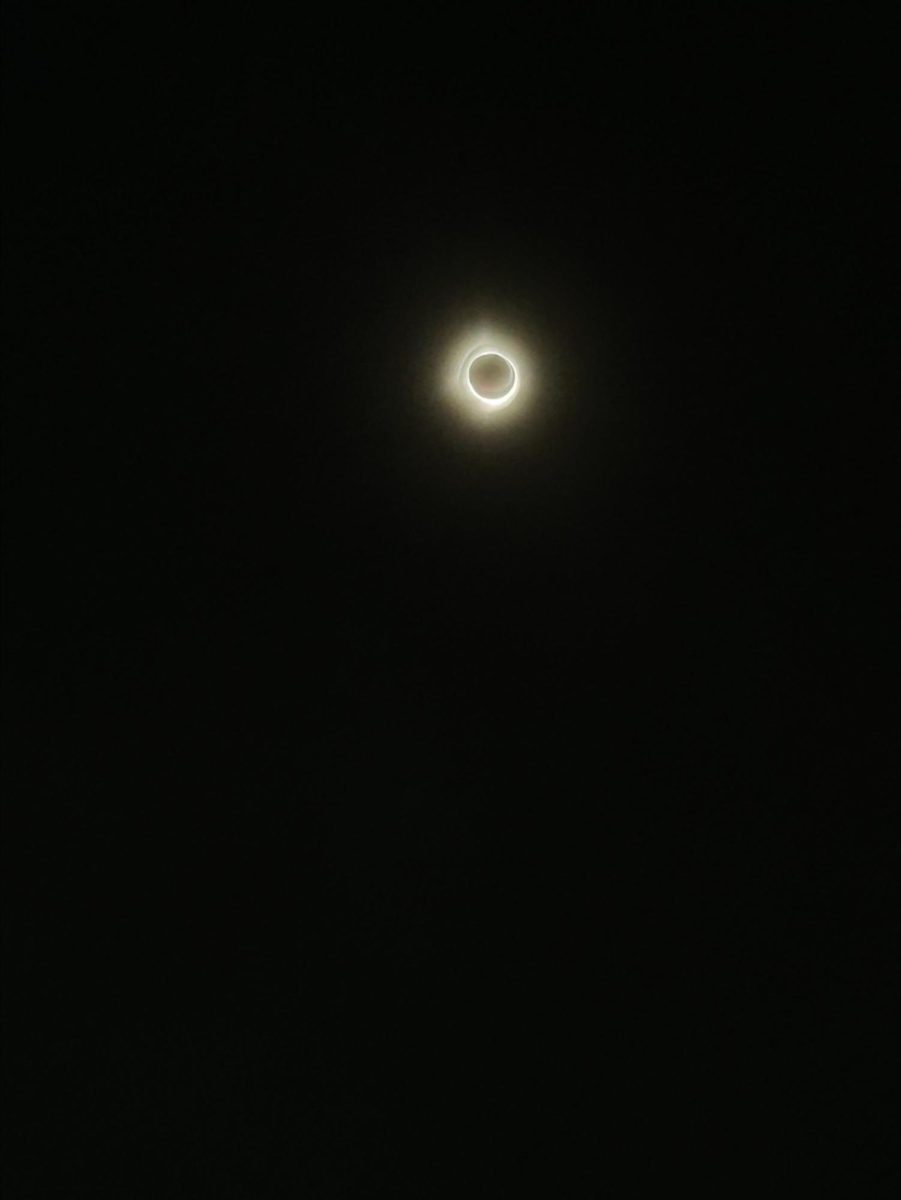CLEVELAND– For many across the country, Monday, April 8 brought about a once-in-a-lifetime event in the sky. In the middle of the day, a total solar eclipse plunged a roughly 115-mile-wide corridor into darkness for nearly five minutes in some areas. The path of totality spanned from northern Mexico into the US through states like Texas, Missouri, Ohio, Pennsylvania and Vermont.
According to National Geographic, “A solar eclipse happens when the moon, on its journey around Earth, happens to pass between the sun and Earth for a moment. A solar eclipse can only happen during a new moon, a phase of the lunar cycle where the moon lies between Earth and the sun. At night, the moon is totally dark during a new moon.”
Unfortunately, Bucks County was not in the path of totality. But astronomy enthusiasts only needed to travel about six hours northwest around the Lake Erie shoreline to get the full experience.
I traveled to Cleveland, one of the largest and closest cities in the path of totality. I certainly wasn’t alone, as nearly one million people traveled to Cleveland and Northeast Ohio for the event, according to an analysis from 19 News WOIO. The city was already jam-packed with tourists for the NCAA Women’s Final Four three days prior, and the Cleveland Guardians home opener that occurred just hours after the eclipse.
For days, forecasters had been warning about the potential for clouds to block the eclipse across the Northeast and recommended people travel to Texas for better viewing conditions. But Cleveland ended up ‘hitting the bullseye’ with clouds moving out just before the eclipse began at 1:50 p.m.
At first, it wasn’t noticeable that the moon had begun covering the sun. But with special glasses to protect yourself from eye damage for looking at the sun, you could clearly see its bottom right quadrant had disappeared under the moon’s shadow. An hour later, my family set up camp at a scenic overlook at a not-so-scenic warehouse park in Brooklyn Centre on Cleveland’s west side. By then, nearly half of the sun was ‘gone,’ and the sky was noticeably darker.
The loss of sunlight also led to a decrease in temperature. Data from the National Weather Service showed Hopkins Airport dropped from 74°F at 1:50 p.m. to 63°F at 3:20 p.m., before rising again after the eclipse.
Then at 3:11 p.m., the main event began. A halo appeared around the sun due to interactions with ice crystals in the high cirrus clouds, something that is usually only seen around the moon. Then the sky got progressively dark, and what looked like a 360-degree subset overtook the Cleveland skyline. The sun got dark, and white rays appeared on the sides of the sun and moon. Suddenly, the birds stopped chirping, thinking it was night. It was so dark you could see the stars in the sky, as well as Venus just below the eclipse.
Despite only a handful of people in that field with us, you could hear hundreds of people scream and applaud. Everything and everyone had stopped what they were doing for this event. Workers from the warehouses had gone to their rooftops to see it. There was a watch party at the community center down the block with everyone gazing in awe. Cars had pulled over to see it. Even the officers came out of the police station across the street to witness the celestial beauty. I personally felt both nervous and excited to finally see something I had wanted to see for years, and may never see again. The next total solar eclipse in the US won’t happen for another 20 years.
But just like that, the sun started moving away, and a peak of sunlight created what is called the diamond ring effect. And soon after, the sky became light again, but you could still see the moon’s shadow traversing the sky to its next destination. Despite the short length of time, totality was one of the most beautiful things I have ever seen.
Michael Babij, an earth sciences professor at Bucks, also got the chance to experience totality in Clyde, Ohio, about an hour west of Cleveland.
“It was just such a great experience. The sky was pretty clear, maybe some high clouds, but it was just so neat to see what happens during totality,” he said.
For those outside the path of totality, the eclipse still put on a show, if you had the proper glasses that was. Around Bucks County, multiple places had watch parties to see the solar eclipse at 90 percent totality. Like during the 2017 eclipse, the Margaret S. Grundy Library in Bristol once again held a watch party on the library’s scenic overlook of the Delaware River.
And right here at Bucks, a viewing was held in the Quad, with music, snacks, entertainment and of course, free eclipse glasses. Sadly, clouds blocked the view during the peak of the eclipse in Bucks County.
As for Alyssa Mangeri, a psychology major, the view was just as close as her neighbor’s house.
“I went over to my neighbor’s house and hung out in some lounge chairs. I thought it was very cool, though I was a little disappointed with the clouds. But not an event you experience every day.”



